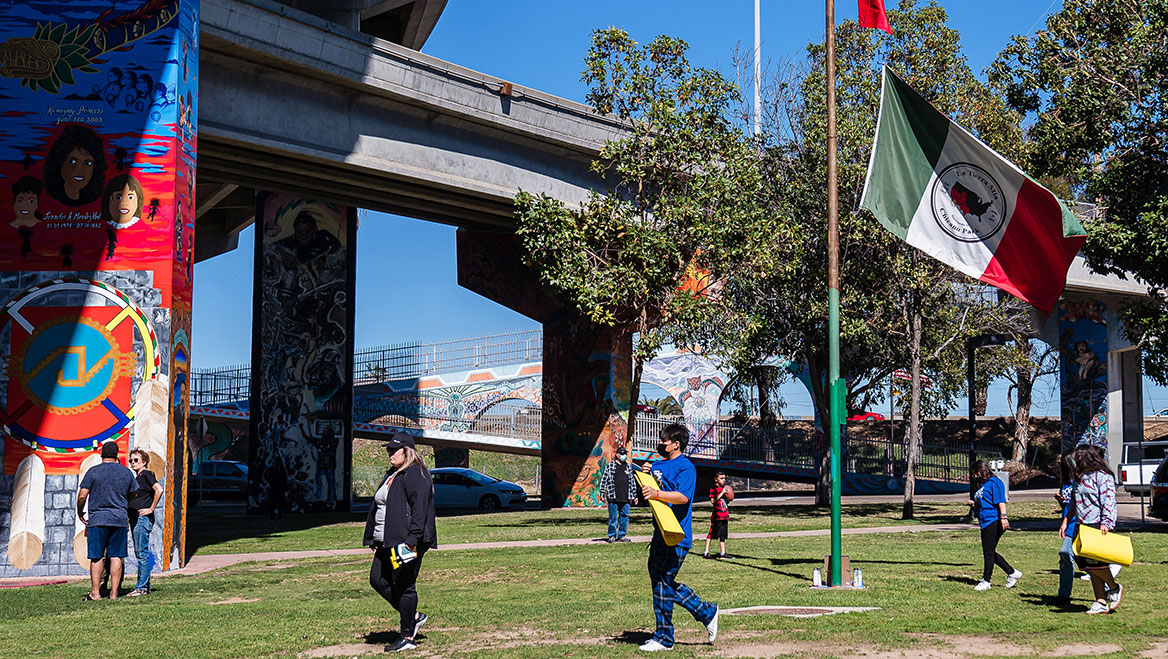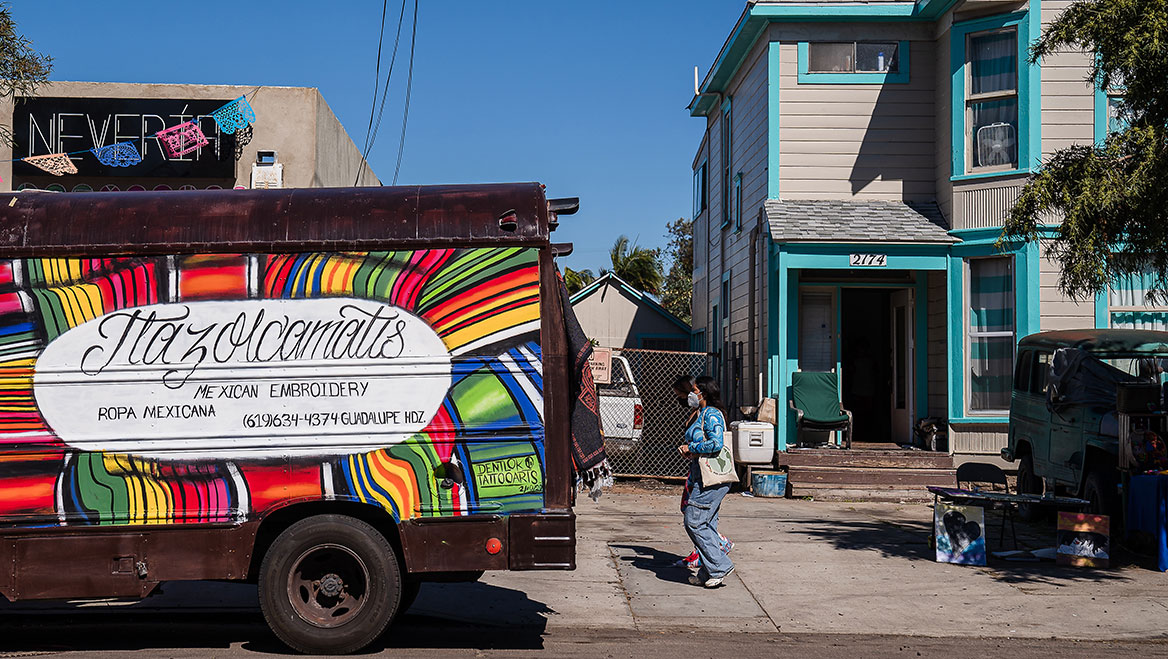March 31, 2022
Julie Corrales understands what's at stake when planning addresses environmental justice.
A resident of Barrio Logan, a multigenerational, oceanfront Mexican-American community in San Diego, she knows the experience of brushing the dust off her windowsills, deposited there thanks to diesel exhaust, industrial sites, and nearby ports and shipbuilding sites. As a policy advocate for the Environmental Health Coalition, a nonprofit community group focused on environmental justice and local activism, she also sees the neighborhood energy behind change.
That's why the new Barrio Logan Community Plan Update, adopted by the city at the end of 2021, represents such a sea change for the area and city. City planners say it exemplifies the way they can iterate and integrate other plans and policies, like the new Parks Master Plan.
"This shows what can be done," says Corrales. "You push and push for decades, and then you see something like this finally happen, and you get a breath of fresh air. We can do it. Sí se puede."
Overflowing with one-of-a-kind local businesses, long-time residents, and a strong current of activism and engagement, Barrio Logan is best known for its colorful Chicano Park, which features a striking series of murals, portraits, and images strung across highway underpasses to create a historic tapestry of Indigenous and Hispanic tradition and culture. It's recognized as both a National Historic Landmark and one of just over a dozen California Cultural Districts.

Chicano Park, located beneath San Diego's Coronado Bridge in Barrio Logan. Photos by Ariana Drehsler.

Volunteers from the Youth Power Group play handball in Chicano Park.

A vendor sells handcrafted native art in front of a Chicano Park mural that reflects the neighborhood's Indigenous and Hispanic culture and history.
The continuity and health of this working class, waterfront community were central to the planning process from both an economic and environmental justice standpoint. According to Mark Steele, AICP, FAIA, founder of M.W. Steele Group and chair of the Barrio Logan Community Planning Group since 2014, the need for the plan was highlighted by numerous failed and derailed efforts. A 1978 plan didn't factor in environmental concerns — or lingering displeasure over the way the neighborhood was bisected in the '60s by Interstate 5 and the Coronado Bridge.
Then came a 2013 planning effort that was initially approved but overturned by strong opposition from local shipbuilders, who managed to get the plan subject to a citywide referendum, where it was defeated. The effort needed to balance community and commercial uses and find the zoning and policy compromises that support those uses.
"The thing about Black and brown communities is that we know the struggle is long-term," says Corrales.
The defeat of the previous plan in 2013 led to the formation of the Barrio Logan Community Planning Group, a multifaceted community planning group. In addition to overcoming COVID-era challenges to collecting feedback and bridging the digital divide during online meetings, city planners listened and acknowledged that there was disenfranchisement and disinvestment in the community, says Heidi Vonblum, the city's interim planning director.
"We said it wasn't a feeling," says Vonblum. "It was a fact."

Walking in the Barrio Logan neighborhood near Chicano Park. Photos by Ariana Drehsler.

On a commercial street in the neighborhood, a man passes a vendor selling ponchos.

The bar at the Mujeres Brew House, a Latinx women-founded and -led community brewing space, educational facility, and taproom.
A number of key transportation and zoning issues in the new plan seek to address both community activation and environmental issues. A buffer zone will separate homes from industrial uses, including shipbuilding, and restrict truck traffic. New land use designations will encourage multimodal transportation and the creation of a constellation of smaller parks across the neighborhood. And a series of housing regulations and reforms and anti-displacement measures aim to slow development. Ideally, that will give the community the ability to invite community-minded developers, support affordable projects, and develop a community land trust.
"They're not expecting an overnight change in their environment, but the community is planning to stay here, and this gives us another foothold," Corrales says. "The new plan actually lets the community have a voice in planning."




